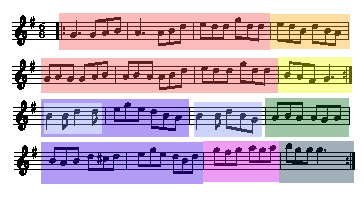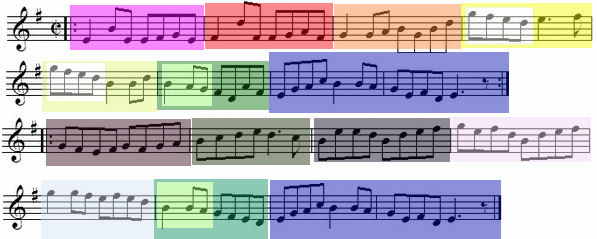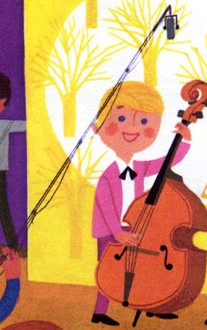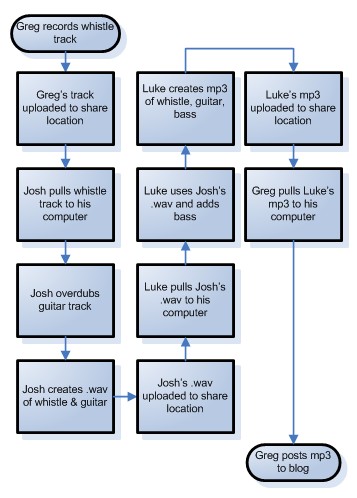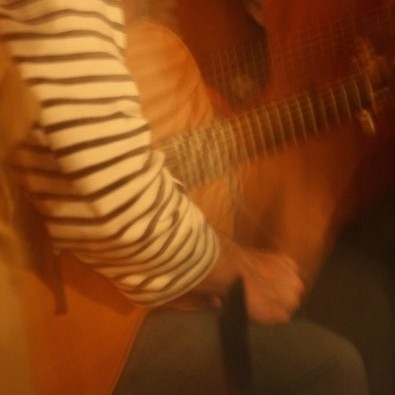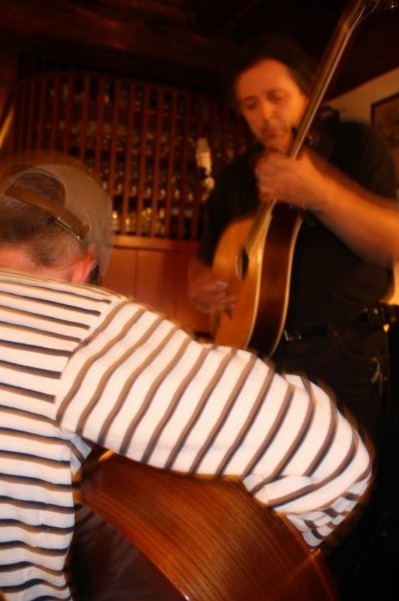 new music
new music
Growing a Tune: Mixing up Josh
Josh spent some time recording two new guitar tracks. One he describes as being a bit more traditional versus the other being a bit more chordal. I liked them both and decided to split the difference and mix the two tracks together. I can also tell you that Luke is working on another wicked pissa track, with a new bass line, that uses both of Josh’s tracks as well. I’m hoping to be able to post that track in the next day or so…Luke???
Also, there has been some interest by a couple of new musicians in recording some additional tracks. So, with any luck, we may soon have a fiddle track and a resophonic tenor guitar.
In the interim, I’ve created an image map of the various iterations below. This gives a nice visual representation of how much activity is happening:
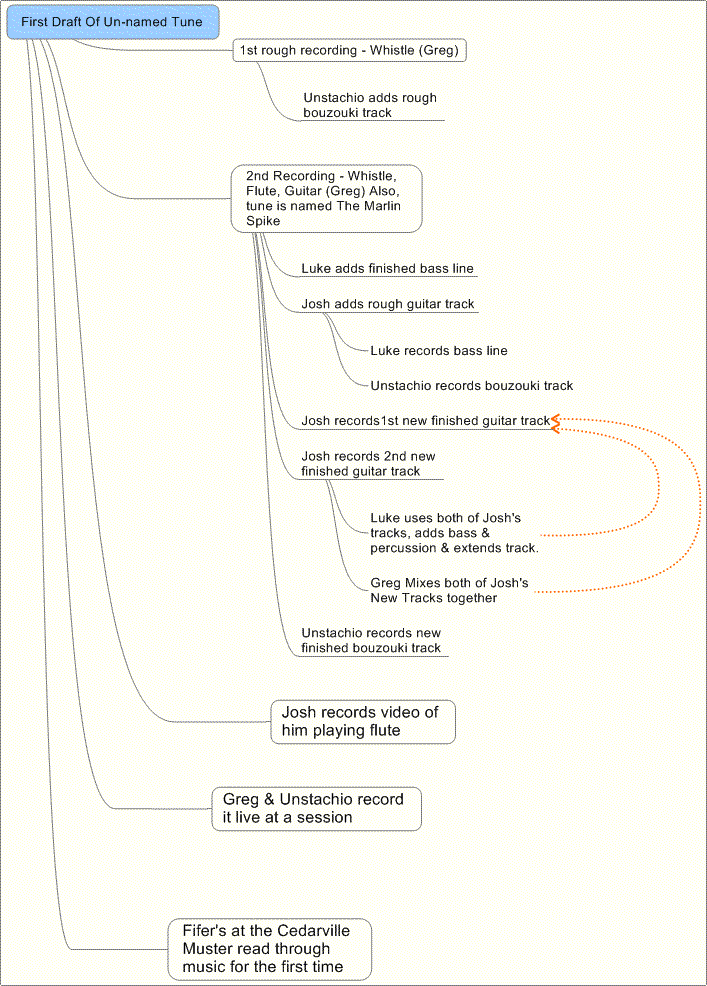
Check it out.
The Marlin Spike (Josh mix) by baconworks


